Reuters’ Biased Crops
The Gaza flotilla took place on the first day of HonestReporting’s study of the AP, Reuters, and AFP/Getty’s coverage of the region. Although the flotilla was undoubtedly the most covered and photographed event involving Israel since the 2008 Gaza War, this study will focus primarily on images originating from Israel and the Palestinian territories – with the exception of Reuters’ questionably cropped photos taken on board the flotilla vessel, Mavi Marmara, which could not be ignored in a study of photo bias against Israel by the wire services.
The pictures were published during a period of intense public dispute between Israel and flotilla organizers over which side was responsible for the violence that ended in the deaths of nine flotilla passengers and injuries to seven IDF commandos. Israeli officials produced video evidence of soldiers being attacked viciously as they boarded the Mavi Marmara ship. Weapons were found on board the ship despite flotilla activists claiming to be unarmed.
In the first picture, published in a Turkish newspaper, notice the flotilla activist holding a knife in the lower right corner:
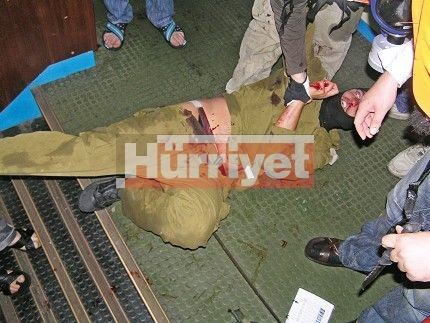
The same photo, originally released by Reuters, has been cropped so that the knife, and potentially evidence of the intentions of those on board the ship, is removed:
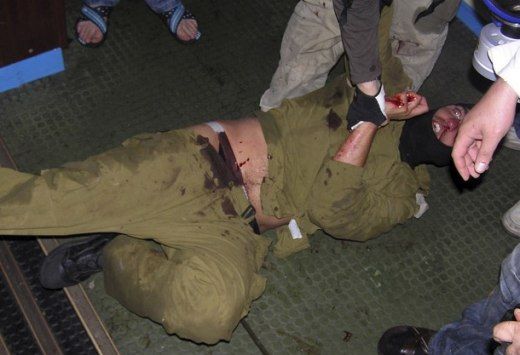
Within days, blogger Charles Johnson identified another cropped Reuters photo:
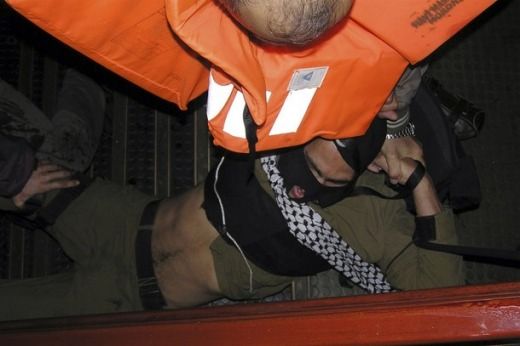
The picture is a cropped version of this photo from the website of the IHH, the Turkish Islamist organization responsible for the flotilla:
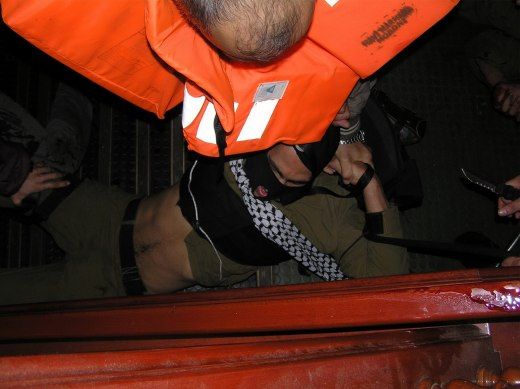
Reuters has cropped out a large knife and a big pool of blood as well as another badly injured Israeli soldier lying on the ground:
Both photos were originally obtained by the Turkish national newspaper Hurryet from the IHH. After Hurryet published the unedited photos, it sent them to the international wire services for distribution across the world. An editor at Reuters, either deliberately or mistakenly, decided to crop them. The version released by Reuters conformed with IHH claims that they were unarmed. When the crops were exposed, Reuters replaced the cropped photos with the originals. By then, however, the cropped photos had already been published in numerous print publications.
The Reuters crops were deemed sufficiently serious to prompt a complaint from Israel’s Minister for Public Diplomacy Yuli Edelstein, who demanded an explanation from Tom Glocer, CEO of Thomson Reuters.
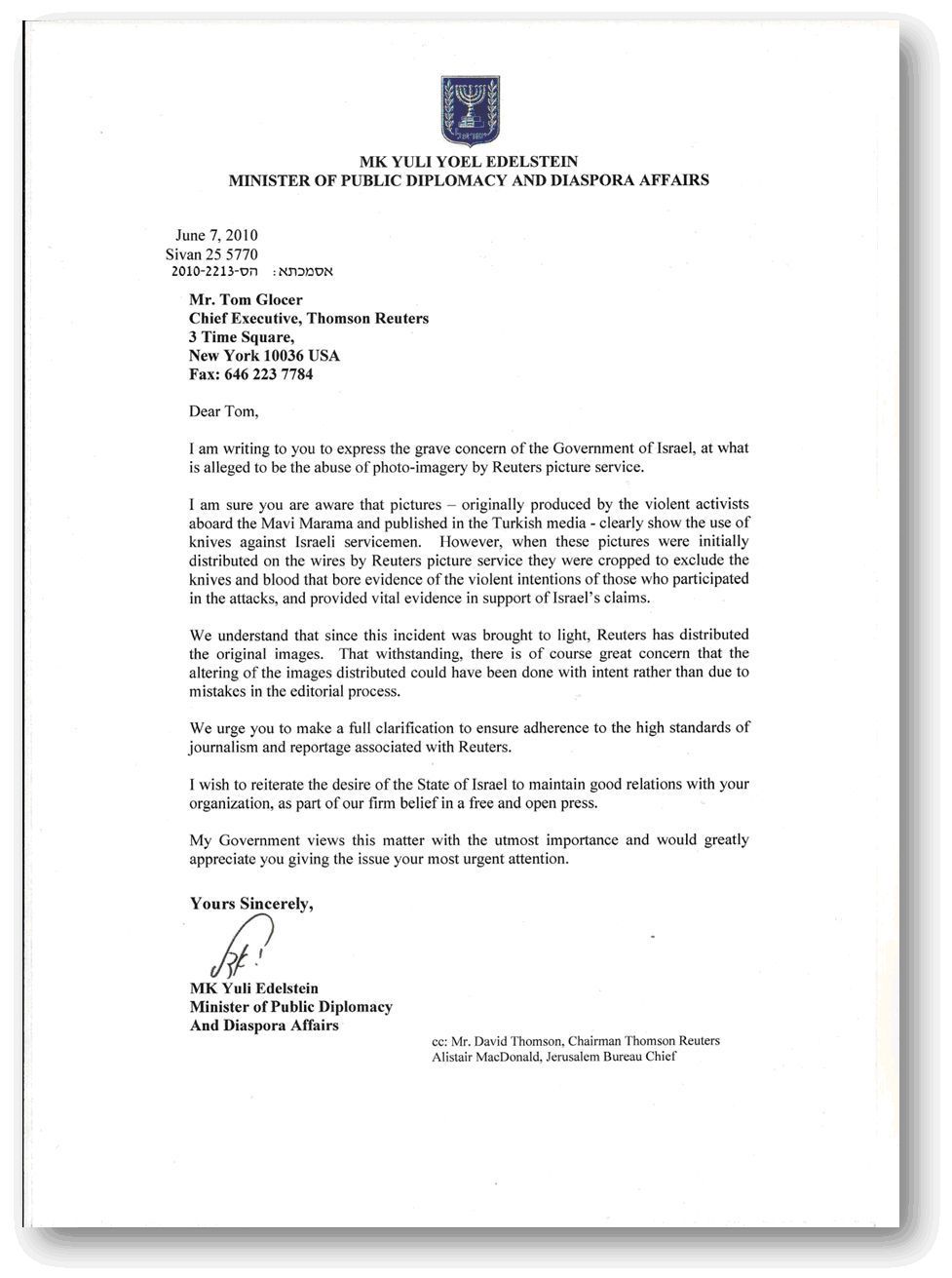
HonestReporting obtained Minister Edelstein’s letter, as well as the response from David Schlesinger, Reuters Editor-In-Chief, who claimed the crops were an honest error. A portion of Schlesinger’s response is worth noting in the study:
Minister Edelstein, I can assure you that Reuters 2,800 journalists subscribe to and believe in our Trust Principles which put as their highest value the provision of fair and unbiased news in all its forms – text, photo, and video.I think if you look at the totality of our coverage of this incident as well, you will see how seriously we take our professional responsibilities.
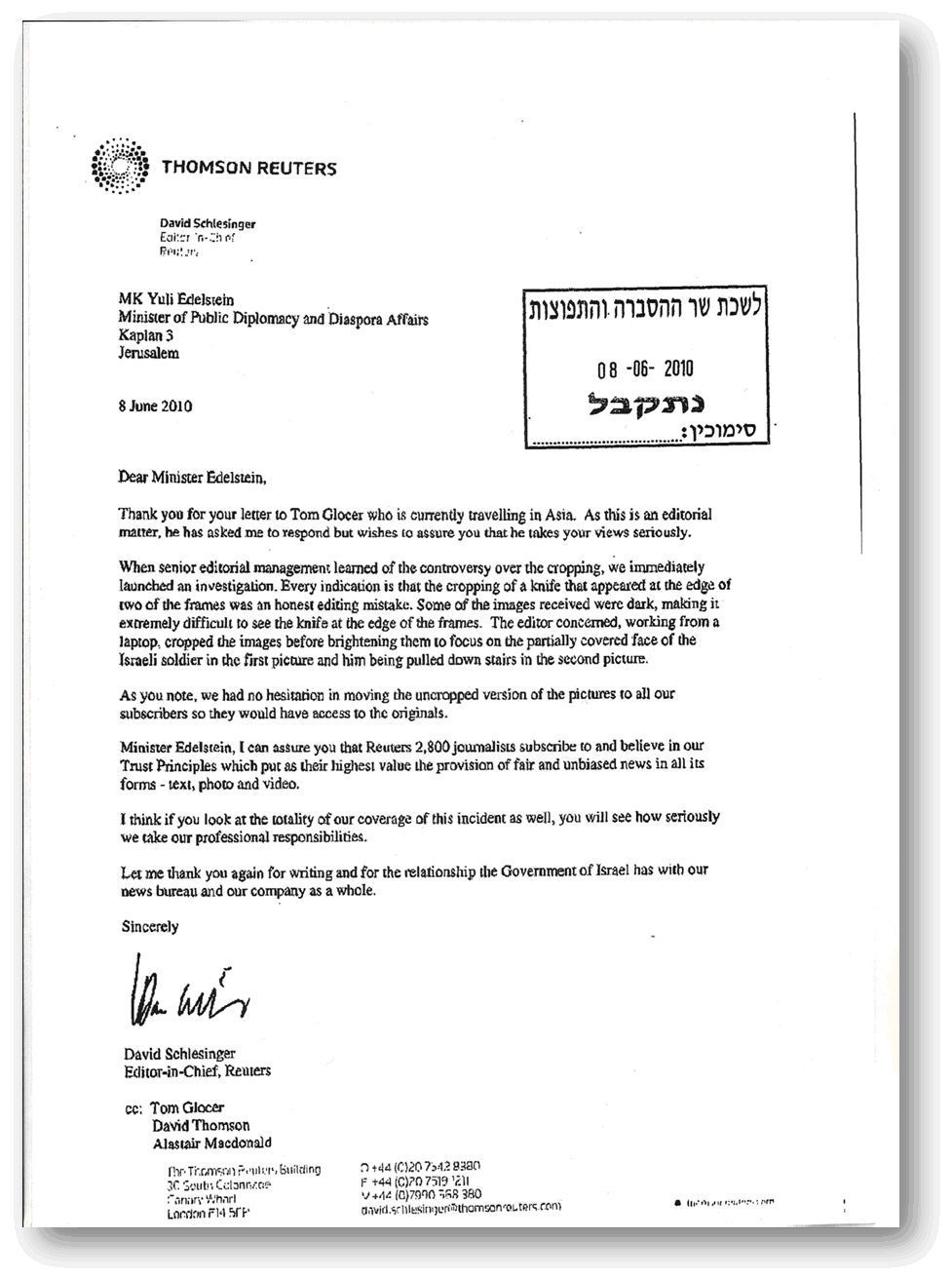
From monitoring over 2,000 images from Reuters alone during the course of our three month study, the truth is that Reuters’ photo crops are only the tip of the iceberg of flawed and biased coverage of Israel.
Shooting for Dramatic Effect
The rest of this section will focus on images that originated in Israel and the Gaza Strip. One of the most striking features is the lack of balance. There are virtually no images expressing any pro-Israel perspective from the public, even those shot in parts of Israel. Images overwhelmingly portray Israel as the aggressor in the incident.
Few, if any, of these pictures appear worthy of inclusion in responsible coverage of the flotilla. In many cases, they appear to be little more than an opportunity to pour scorn on Israel. The picture below, together with its caption, is a case in point:
This photo from AFP/Getty in Gaza, taken more than a week after the initial confrontation aboard the Mavi Mamara, cynically exploits the suffering of a Palestinian child. The image bears no relationship to the flotilla, but the caption makes the tenuous link by accusing Israel of preventing the 10,000 tons of mainly medical supplies, hospital equipment and construction materials from reaching Gaza.
In reality, much of the medication had expired and many of the medical supplies had been poorly packaged and were rendered unusable. The caption, however, reinforces the claim that the flotilla was a humanitarian mission, not a political one.
In addition, it is vital to remember that photographers do not operate freely in Gaza which remains under strict Hamas control. It is reasonable to conclude that Hamas played a role in creating the image, either active or passive.
In other cases, such as the photo below, provocative – and completely unrelated – images like Israel’s security barrier appear prominently alongside objects of peripheral relation, such as a discarded Turkish flag. The captions then focus attention on events not shown in the photos at all, turning the captions into mini-stories of their own.
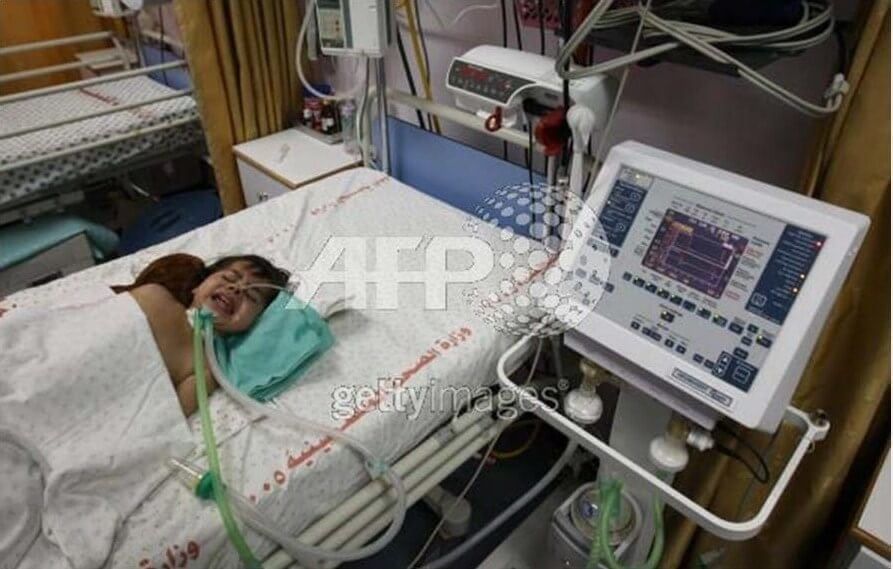

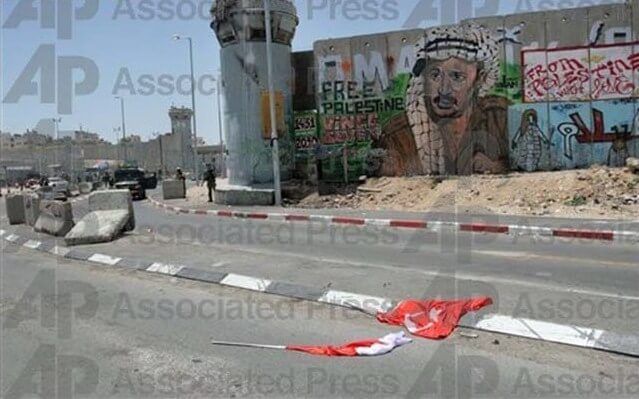

The next sequence of images was taken in the aftermath of the initial incident aboard the Mavi Marmara.
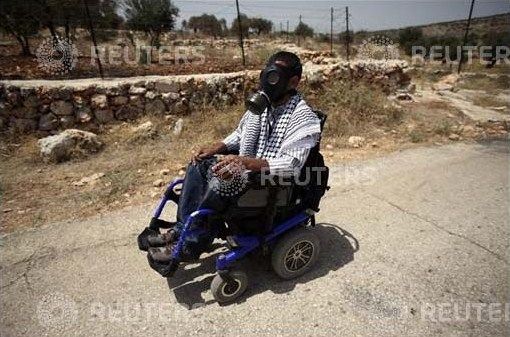

This gentleman appears in a number of images throughout our three month study. The appearance of the photo is particularly questionable for an international news wire service that claims to be impartial and wants to “avoid any bias which may stem from control by specific individuals or interests.”
Not only does it serve its purpose by showing a demonstrator who allegedly needs to use a wheelchair wearing his gas mask in the event that the IDF will fire tear gas to disperse the crowd and attack a disabled man, it also manages to incorporate the flotilla together with what the caption describes as “the controversial Israeli barrier in the West Bank village of Bilin near Ramallah,” again making an artificial link that shows Israel in a bad light.
The two pictures below are actually the same image, one from the AP and the other from AFP/Getty. Here we have four particular elements – cancer, woman, child and crying – used to evoke an emotional response.
Only the AFP/Getty caption describes the woman as a cancer patient. However, the AP photo shows the child crying. No explanation is given for the child’s tears, which could have been caused by the rush of photographers trying to take the same picture. Regardless of the reason, the tears contribute to the message that the photo subjects are victims of Israeli aggression.
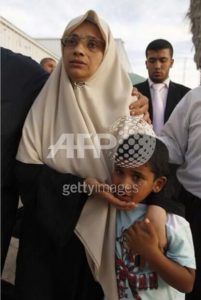

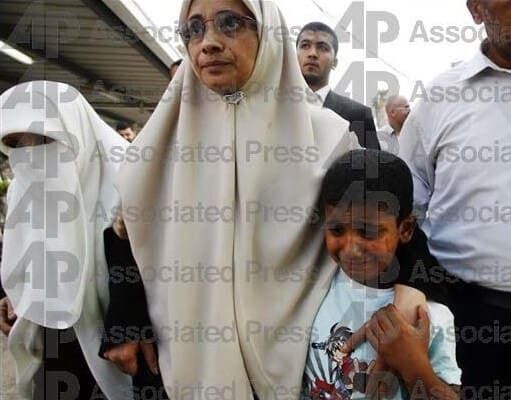

Questioning Israel’s Perspective
In addition to local coverage of reactions to the flotilla, the three wire services released photos taken from the IDF’s video footage filmed from an army helicopter as Israeli commandos tried to board the Mavi Mamara and were viciously beaten by the passengers. The videos served as Israel’s strongest evidence of aggression against its soldiers.
While it is common practice for wire services to indicate that the footage came from an outside source, the language of the captions casts some level of doubt about the contents of the video. Other images, including those supplied by the IHH that were later cropped by Reuters, do not contain the same language.
These are three of the pictures that highlight this example of bias. The first picture comes from Reuters and the second from AP. The third is from a pool photographer, released by the AP.
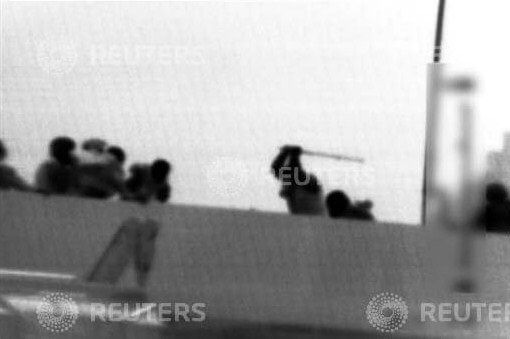

The first caption emphasizes the fact that the image is a frame grab “from an IDF video showing what the IDF says is a pro Palestinian activist hitting Israeli soldiers with a club-like object.”
The AP picture states that it “shows what the IDF says is one of several commandos being dropped on to the Mavi Mamara ship.”
Even the third image emphasizes that the IDF reviewed this picture before it was cleared for publication. No pictures from the West Bank or Gaza indicate they were reviewed by Hamas or any Palestinian body.
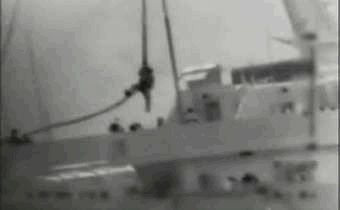
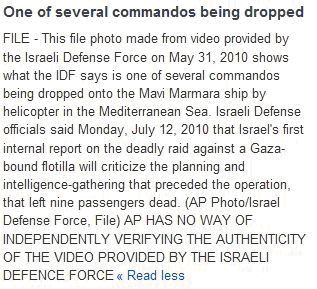
In addition, AP uses all capital letters for emphasis to indicate it cannot independently verify the pictures. It is a standard disclaimer for images that weren’t produced by the wire service. However, no such disclaimer appears on photos filed by Palestinian stringers.
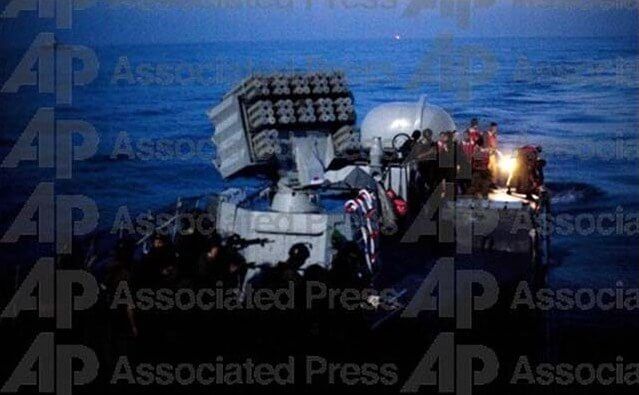

Read the whole of the Shattered Lens series:
CLICK HERE TO RETURN TO THE SHATTERED LENS INTRODUCTION
CLICK HERE TO VIEW PART 5 – BRING OUT YOUR DEAD
CLICK HERE TO VIEW PART 6 – PHOTO BIAS IN DEPICTIONS OF THE IDF

